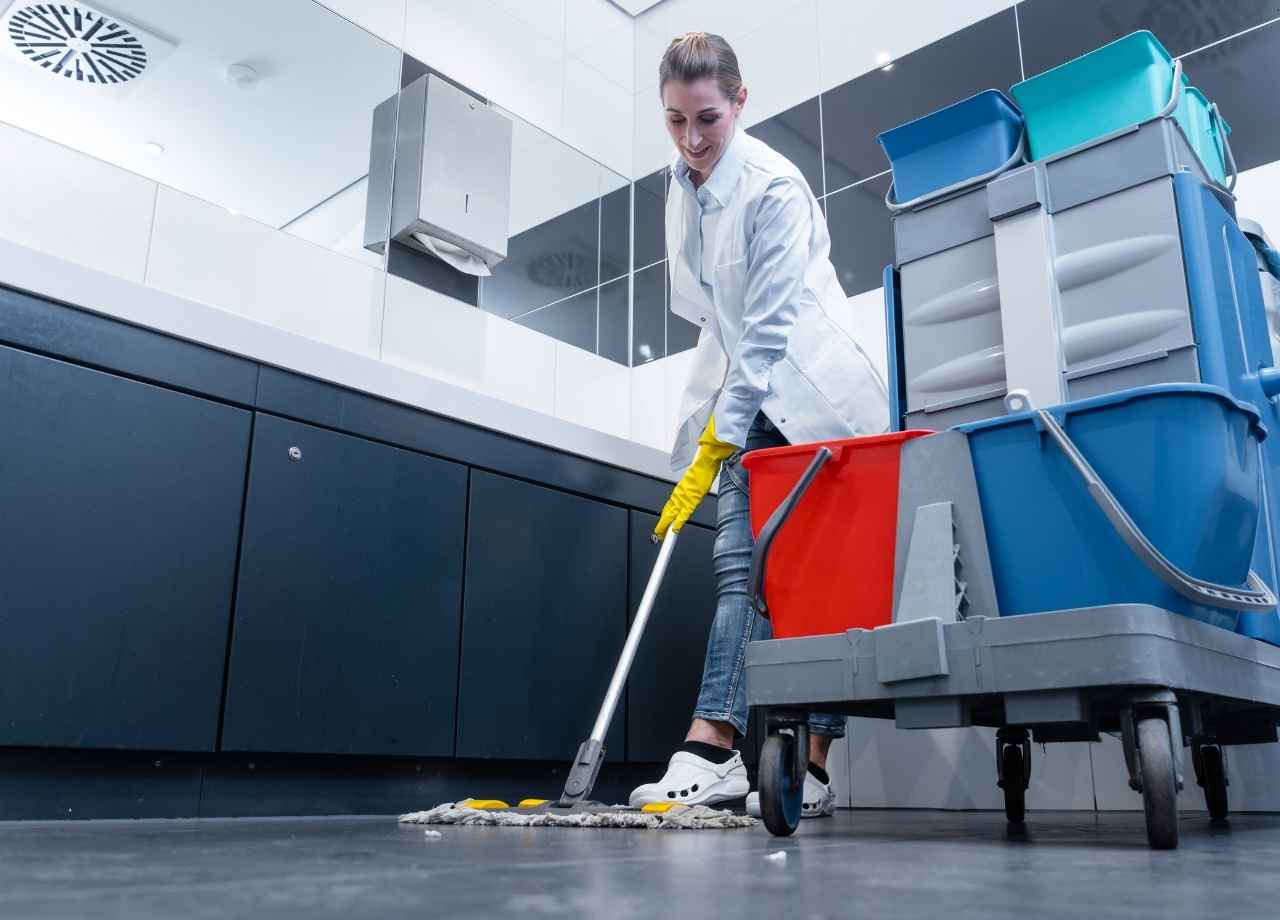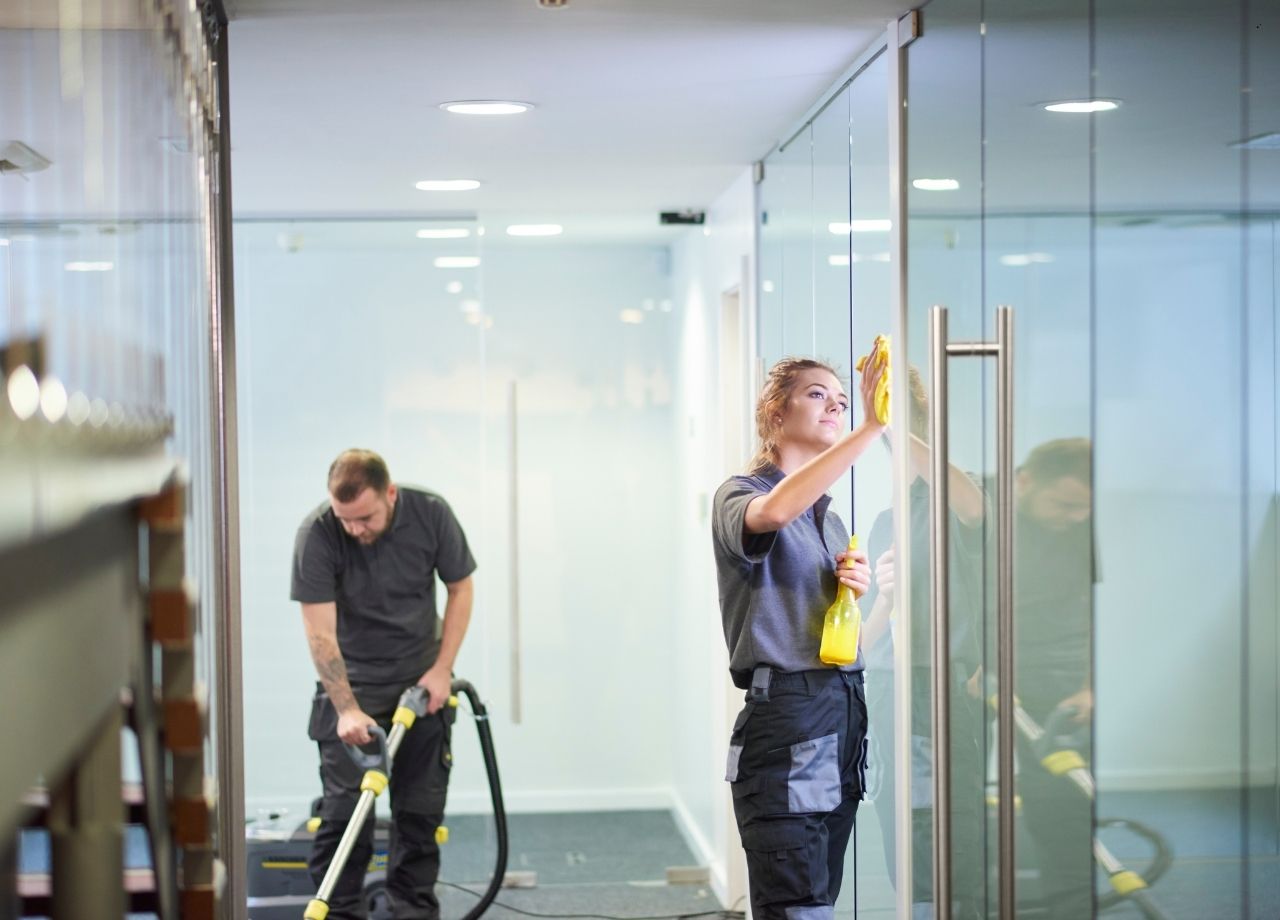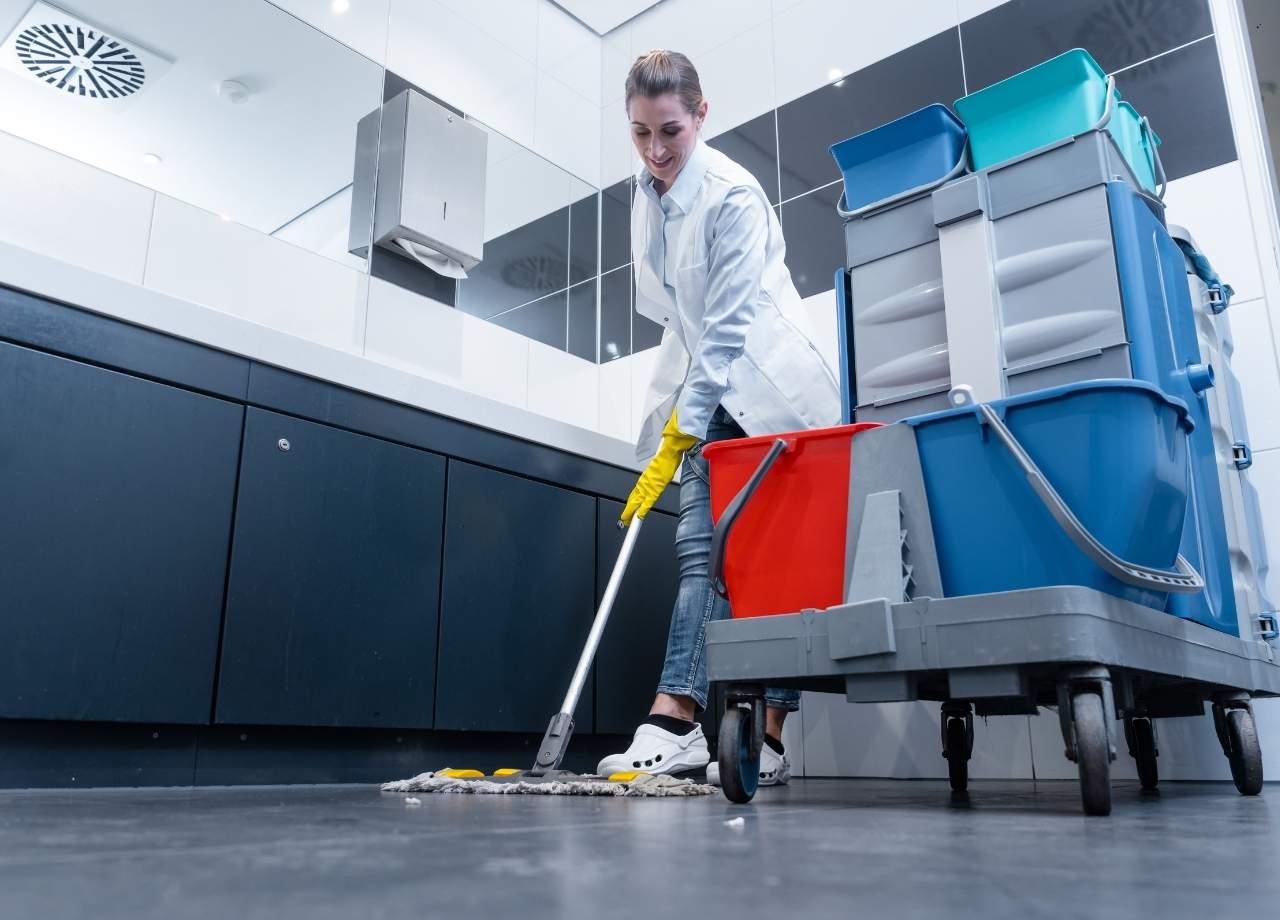What Is Dwell Time & Why Does It Matter in Commercial Cleaning?
Every facility manager knows not all cleaning is created equal. A surface might look spotless and smell fresh, but that doesn’t necessarily mean it’s safe. One of the most overlooked reasons for that gap is dwell time—a critical but often-misunderstood element in professional cleaning.
Dwell time isn’t a buzzword. It’s a technical requirement. And ignoring it can make your entire cleaning routine less effective, no matter how good your products are.
Defining Dwell Time in Practical Terms
Dwell time refers to how long a disinfectant or cleaner must remain visibly wet on a surface to kill germs effectively. It’s the time required for the chemical to do its job—whether that’s neutralizing viruses, bacteria, or other harmful microorganisms.
If the surface dries before that time is up—or if it gets wiped down too soon—the product may not perform as advertised. That means microbes can survive, leaving the space looking clean but still carrying risk.
EPA-registered disinfectants are tested under conditions where the surface stays wet for the entire listed contact time. If the label says five minutes, the product must stay wet for five minutes. Not three. Not until it “looks dry.” Five.
What Happens When Dwell Time Gets Ignored
Skipping dwell time undermines the entire disinfection process. Crews may feel like they’re doing a thorough job, but if surfaces don’t stay wet long enough, pathogens can remain active. This creates a false sense of safety for both workers and occupants.
In commercial environments—like offices, medical clinics, schools, warehouses, and restaurants—this can lead to:
- Increased spread of illness
- Lower tenant and employee satisfaction
- More sick days and reduced productivity
- Potential legal liability, especially if cleaning protocols are audited
And then there’s the cost. Cleaning products are a recurring line item. If they’re not used properly, that’s wasted budget. If work has to be redone—or complaints spike—that’s wasted labor. Either way, skipping dwell time leads to avoidable rework.
Why Time on Surface Really Matters
Different disinfectants are formulated for different organisms. Some might kill flu viruses in two minutes but require ten to eliminate norovirus. If the surface dries in minute seven, the norovirus is still viable.
Temperature, airflow, and surface type all play a role in how long a product stays wet. Warm rooms can evaporate liquids faster. Porous surfaces might absorb disinfectants before they can work effectively. Experienced teams know how to adapt—whether that means reapplying product, adjusting technique, or changing tools altogether.
Barriers to Proper Dwell Time
Dwell time is easy to overlook, and the reasons why are understandable:
- Time pressure – Crews often face tight overnight schedules or are expected to clean high-traffic areas quickly.
- Lack of training – Many cleaning staff haven’t been taught how to interpret labels or contact times.
- Equipment mismatch – Fine-mist sprayers or dry cloths can cause disinfectants to evaporate before they’ve had a chance to work.
Sometimes it’s a perception issue. If the cleaner smells strong or leaves a shine, people assume the surface is sanitized. But without sufficient dwell time, that assumption could be wrong.
What Facility Managers Should Do Differently
Dwell time is a requirement—not a suggestion. And it’s printed on every EPA-registered disinfectant label for a reason. If a janitorial team doesn’t follow that guidance, the product hasn’t technically been used correctly.

Here’s what you can do to ensure it is:
- Review product labels – Confirm dwell times for the disinfectants being used in your facility.
- Standardize products – Too many different brands can lead to confusion or misuse. Stick to one or two trusted options.
- Ask simple questions – During walkthroughs, ask your crew: “How long does this need to sit before wiping?”
- Build dwell time into schedules – Don’t let unrealistic timelines lead to shortcuts. Proper cleaning takes time.
Spot checks during cleaning, especially in high-risk or high-touch areas, can reveal gaps in understanding. And correcting those early avoids problems down the line.
Product Labels Aren’t Just Legal Formalities
Every EPA-approved disinfectant has label instructions that serve as part of its legal registration. These include:
- Application method (spray, wipe, etc.)
- Dwell time (per microorganism)
- PPE requirements
Ignoring these not only weakens disinfection—it opens the door to compliance violations. In industries like healthcare, food service, or regulated manufacturing, that’s more than just a best practice issue. It’s a legal one.
If there’s an outbreak and cleaning documentation is reviewed, failure to follow label instructions could raise questions around liability or insurance coverage.
Training Can’t Be an Afterthought
The biggest risk with dwell time is assuming everyone knows what it is. But unless your cleaning team has been specifically trained, chances are they’re treating all disinfectants the same—or moving too fast to allow them to work.
- Training should include:
- Reading and interpreting product labels
- Demonstrating application methods
- Using a stopwatch or timer to reinforce proper dwell time
- Reviewing high-touch surfaces by zone
Posting cheat sheets in janitorial closets that list the most common disinfectants and their dwell times can also be helpful. They take the guesswork out of the process and increase consistency across shifts.
If your contractor isn’t providing this kind of training—or can’t walk you through it—it may be time to ask whether they understand the broader risks involved.
Smart Tools That Make Dwell Time Easier
Even small adjustments can help your teams manage dwell time more effectively. Examples include:
- Color-coded sprayers and bottles
- Disinfectant wipes with labeled contact times
- Janitorial signage listing chemical protocols
- Electrostatic sprayers for full-surface coverage
- Pre-mixed solutions to avoid dilution errors
There are also newer formulations available that offer shorter dwell times—as little as 30 seconds in some cases. While they may cost slightly more per use, they reduce drying problems, improve compliance, and can be more efficient for fast-paced environments.
Dwell Time and Your Bottom Line
It’s not just about germs. Effective dwell time means better outcomes across the board:
Fewer sick days
- Stronger satisfaction scores
- Less rework and fewer callbacks
- Better long-term carpet and surface preservation
- Peace of mind for employees, tenants, and visitors
And when cleaning is done right the first time, it also means a smoother, more cost-effective operation.
That’s why facility teams across Texas trust National Facility Contractors—to ensure that details like dwell time aren’t just included in the process, but actively managed and enforced as part of our day-to-day service standards.
Final Thoughts
Dwell time may seem like a small technicality, but it’s one of the most important variables in effective commercial cleaning. Whether you’re running a high-traffic retail site or a quiet office complex, giving disinfectants the time they need to work is one of the simplest ways to improve hygiene and protect your building’s occupants.
Facility managers who treat dwell time as a non-negotiable part of the cleaning process see better results—not just on surfaces, but in occupant health, satisfaction, and trust. Because in the end, it’s not just about looking clean. It’s about being clean.







